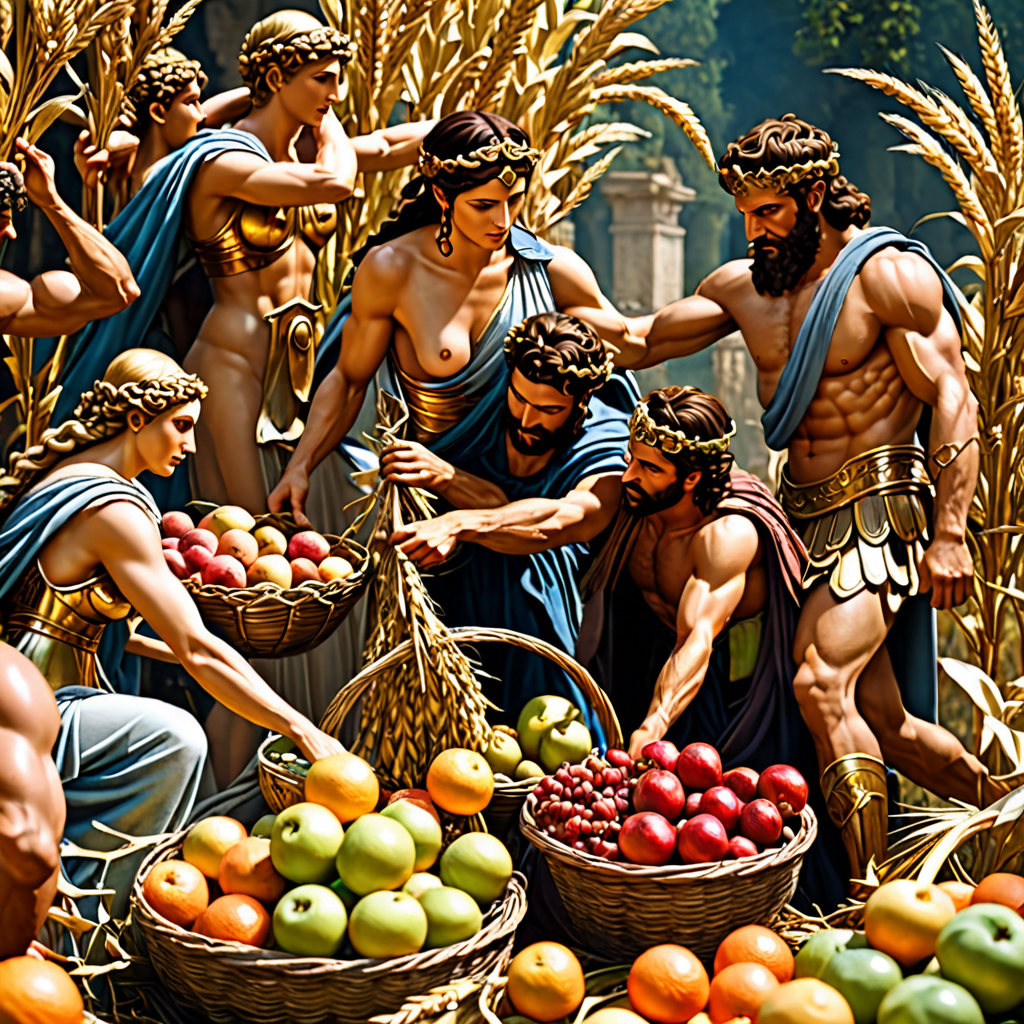Indonesian Mythology: A Tapestry of Time and Space
Indonesian mythology is a rich and vibrant tapestry woven from ancient tales, beliefs, and traditions. It offers a unique perspective on time and space, revealing a complex interplay between the material world and the realm of the supernatural. This intricate web of stories explores the origins of the universe, the cycles of life and death, and the sacredness of the natural world. From the mythical origins of the islands to the spirits that inhabit the forests, mountains, and seas, Indonesian mythology paints a vivid picture of a world where the past, present, and future coexist in a harmonious balance.
Time in Indonesian Mythology: From Creation to Eternity
Time in Indonesian mythology is not linear, but cyclical. It is a constant flow, an endless cycle of birth, death, and rebirth, mirroring the natural rhythms of the world. The creation myths tell of how the universe was formed, often through the actions of powerful deities or mythical creatures. The origin of the islands of Indonesia is often attributed to the actions of these mythical beings, with the islands being formed from the bodies of fallen deities or the silt deposited by powerful creatures. These creation myths offer a glimpse into the origins of time and provide a framework for understanding the ongoing relationship between humanity and the divine.
The Cosmic Cycle: From the Beginning to the End
The concept of a cosmic cycle is central to Indonesian mythology. The universe is not seen as a static entity but as a dynamic system in constant flux. This cyclical understanding of time permeates various myths and legends, ranging from the annual rice harvest cycle to the rise and fall of empires. The cycle is a reminder that everything is transient, and that life is a continuous journey of transformation. The emphasis is not on a singular beginning or end but on a continuous flow of existence.
The Mythical Realm: A Parallel Universe of Spirits and Deities
The realm of the supernatural, known as the "alam gaib" (invisible world), is an integral part of Indonesian mythology. This realm is populated by a diverse array of deities, spirits, and mythical creatures, each with their own roles and powers. The realm of the "alam gaib" overlaps with the physical world, with spirits inhabiting mountains, forests, seas, and even the homes of humans. These spirits play an active role in the lives of humans, influencing their fortunes, providing guidance, and sometimes even causing mischief. The "alam gaib" is a constant reminder of the unseen forces that govern the world and the importance of maintaining a harmonious relationship with the spirits.
Space as a Sacred Ground: From Mountains to Seas
In Indonesian mythology, space is not merely a physical location but a sacred ground. Mountains, forests, seas, rivers, and even rocks are imbued with spiritual significance and are often the abodes of deities or spirits. Every natural element holds a special place in the world and possesses a unique energy. Mountains, for instance, are often considered to be the gateways to the realm of the spirits, while the seas are seen as the dwelling place of powerful sea deities. These sacred sites serve as places of power and ritual, where humans can connect with the divine and seek guidance.
The Significance of Sacred Sites: Places of Power and Ritual
Sacred sites in Indonesian mythology are not just places of worship, but are living embodiments of the spirits and deities they represent. Each site holds a unique energy and power, making them central to the lives of the people who believe in them. These places serve as points of connection between the human world and the realm of the spirits, offering a profound understanding of the interconnectedness of all things.
For instance, Mount Merapi in Java is considered a sacred mountain, home to the powerful spirit of the mountain, Mbah Petruk. Villagers regularly perform rituals and offerings to appease the spirit and ensure their safety. Similar traditions exist for sacred rivers, forests, and even caves. These sacred sites act as reminders of the spiritual power that permeates the natural world, encouraging reverence and respect for the environment.
Exploring the Concept of Time in Indonesian Literature: Myths and Legends
Indonesian folklore, rich in myths and legends, further explores the concept of time. These stories serve as a repository of wisdom passed down through generations, offering insights into the understanding of time and the nature of existence. Mythical figures like the Dewa Wisnu, the preserver god, symbolize the cyclical nature of time, while stories about the rise and fall of kingdoms illustrate the ephemeral nature of power and the resilience of the human spirit.
The tales of the "Dayang Sumbi," a weaver who gives birth to a powerful warrior through a magical cloth, demonstrates the fluidity of time. The legend of "Sangkuriang," who unknowingly kills his own mother, illustrates the consequences of actions and the importance of learning from the past. These stories, woven into the fabric of Indonesian literature, highlight the importance of understanding and respecting the past to navigate the present and shape the future.
Temporal Fluidity: Shifting Timelines and Alternate Realities
Indonesian mythology often features shifting timelines and alternate realities, blurring the lines between past, present, and future. The "alam gaib," the realm of the spirits, is a place where time operates differently, with past events often influencing the present and future. The ability to travel between realms and timelines is common in Indonesian folklore, adding another layer of complexity to the understanding of time.
The stories of the “Putri Mandalika,” a princess who sacrifices herself to appease the spirits of the sea, reveal the power of time to shape destinies. These myths demonstrate a fluid concept of time, allowing for the possibility of parallel realities, alternate histories, and the enduring influence of the past on the present.
Spatial Dimensionality: A Multilayered Understanding of Space
Indonesian mythology presents a multilayered understanding of space, encompassing both the physical world and the metaphysical realm. The "alam gaib" is not a separate entity but a dimension that intertwines with the physical world, with spirits residing in forests, mountains, and water sources. This concept of space extends beyond physical boundaries and encompasses the invisible forces that shape the world.
The stories of mythical creatures like the "Naga," giant serpents that dwell in the oceans, highlight the interconnectedness of the physical and spiritual worlds. The "Kijang," a mythical deer said to be able to speak and guide lost travelers, reminds us that the natural world holds its own secrets and wisdom. This understanding of space encourages respect for the environment and the recognition of the unseen forces that govern the world.
The Enduring Power of Indonesian Mythology: Reflections on Time and Space
Indonesian mythology offers a rich tapestry of stories that shed light on the complex relationship between time and space. The cyclical nature of time, the importance of sacred sites, and the interconnectedness of the physical and metaphysical worlds offer a unique perspective on the universe and humanity's place within it. These ancient tales continue to resonate today, providing insights into the human experience and offering guidance for navigating the challenges of the present.
The enduring power of Indonesian mythology lies in its ability to connect people to their past, their environment, and their spiritual heritage. The stories serve as a bridge between generations, ensuring the preservation of cultural traditions and offering a deeper understanding of the world around us. As we continue to explore the rich tapestry of Indonesian mythology, we gain a deeper appreciation for the wisdom and beauty of these ancient tales.
FAQ
1. What is Indonesian mythology?
Indonesian mythology is a collection of ancient stories, beliefs, and traditions about the origins of the universe, the islands of Indonesia, and the roles of the supernatural beings in human lives.
2. What is the concept of time in Indonesian mythology?
Time in Indonesian mythology is cyclical, flowing in an endless loop of births, deaths, and rebirths, reflecting the natural rhythms of the world.
3. What is the significance of sacred sites in Indonesian mythology?
Sacred sites are places of power and ritual where humans can connect with the supernatural realm and seek guidance from the spirits.
4. How does Indonesian mythology explore the concept of space?
Indonesian mythology presents a multilayered understanding of space, encompassing both the physical world and the realm of the spirits.
5. What is the enduring power of Indonesian mythology?
Indonesian mythology offers a deep understanding of the human experience, connects people to their past, and provides guidance for navigating the present.



